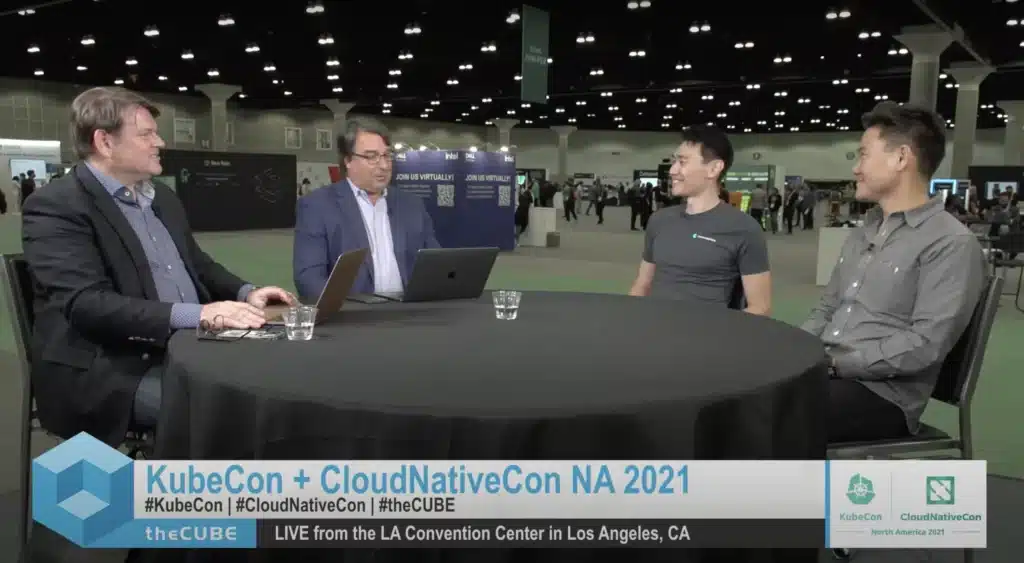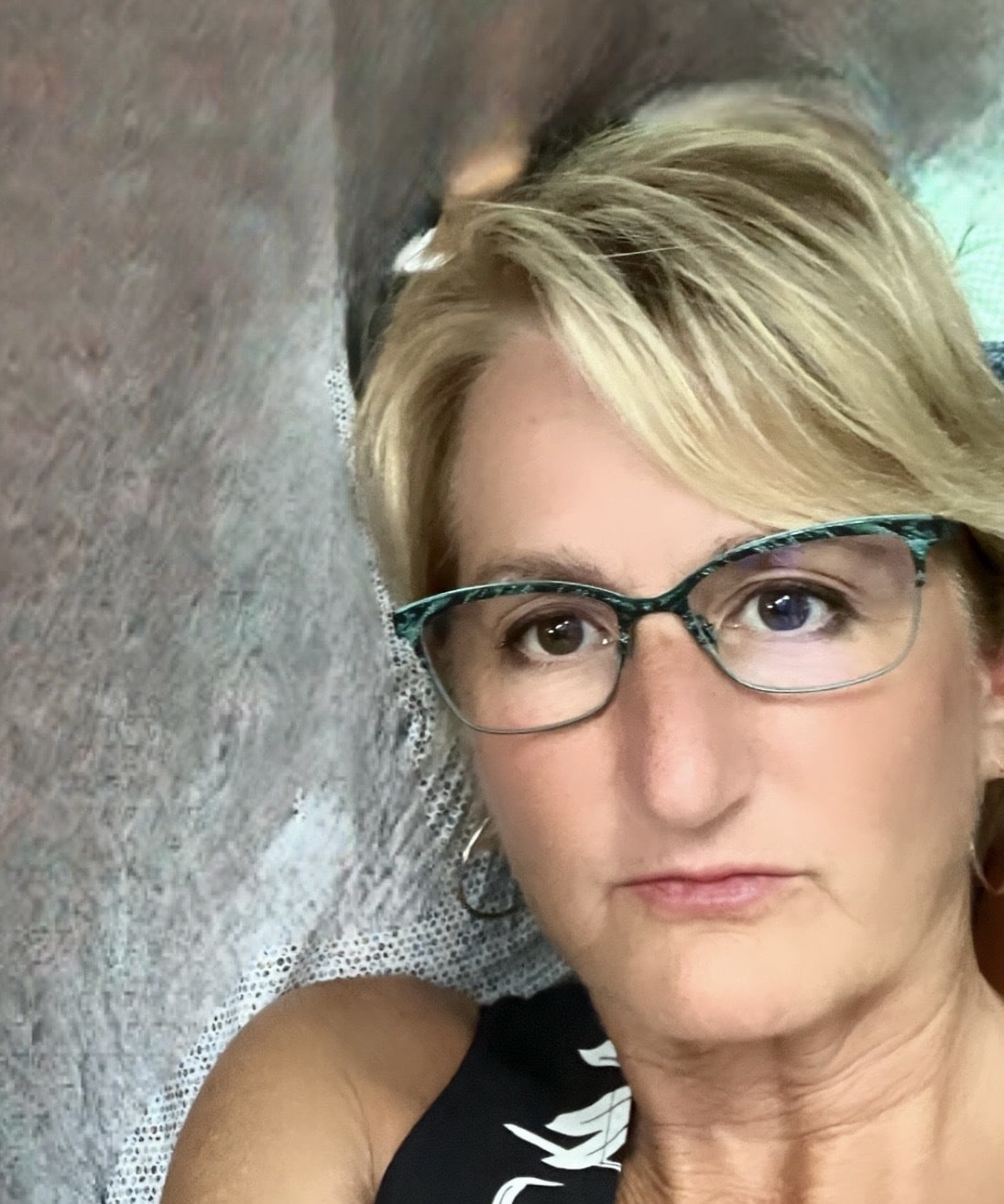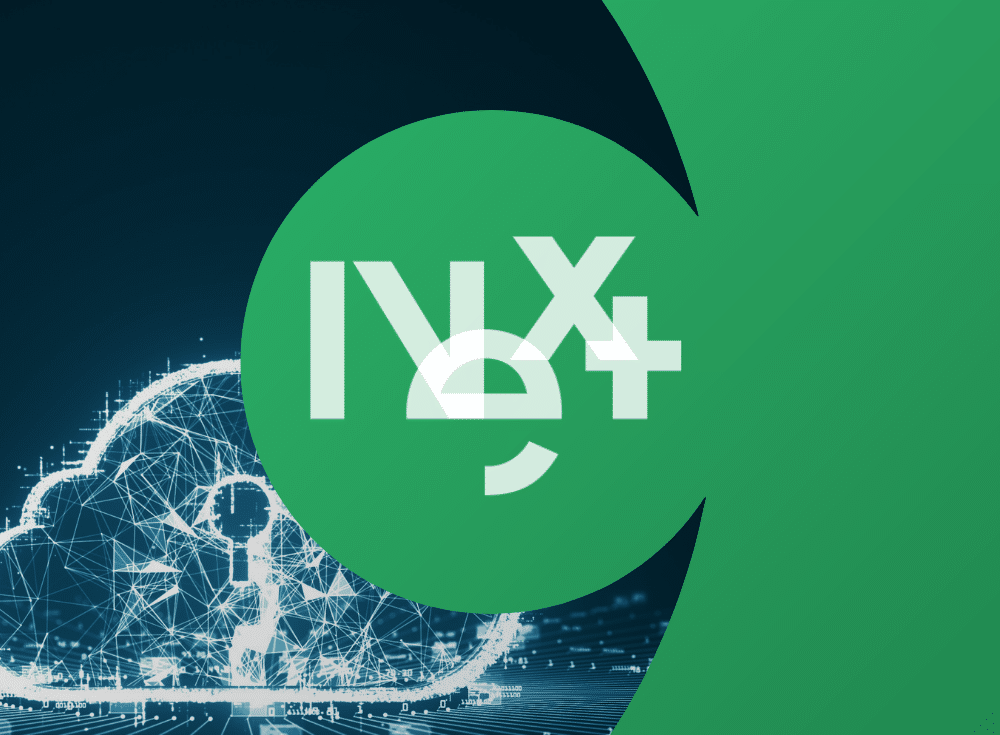theCube: Martin Mao talks $200M funding, distributed tracing

Chronosphere co-founder and CEO, Martin Mao, and investor Jerry Chen from Greylock Partners chat on “theCube” at KubeCon+CloudNativeCon North America 2021.

On: Dec 23, 2021
Wrapping up an exciting year
Our co-founder and CEO, Martin Mao, and key Chronosphere investor, Jerry Chen from Greylock Partners, sat down with theCube at KubeCon + CloudNativeCon North America 2021 to catch up on the latest with Chronosphere. At the time, we had just closed a massive $200M Series C funding round, achieved unicorn status, and added distributed tracing capabilities to our observability platform.
October 2021, when KubeCon took place, was an exciting time for Chronosphere. Martin and Jerry (a frequent guest on theCube) had a lot to share. During a rapid-fire Q&A session, theCube hosts John Furrier and David Nicholson asked about all things Chronosphere, growth, distributed tracing, cloud-native, and observability.
For some context before diving into their discussion, prior to co-founding Chronosphere in 2019, Rob and Martin led the observability team at Uber. During their time there, they experienced first-hand the challenges of running large-scale observability for cloud-native environments. Their long-time colleague, Prashant Varanasi, writes about their shared experience with the observability challenge at Uber here.
Here are a few key highlights from Martin and Jerry’s discussion on theCube:
How is Chronosphere’s observability platform different?
After congratulating Martin and Jerry on Chronosphere’s latest news, John set up the Q&A by framing their ongoing conversations about what’s happening in cloud-native.
John: Who would have known that observability and distributed tracing would be a big deal … Jerry, you predicted that in 2013.
Jerry: I think together we predicted that cloud was going to be a big deal in 2013. The rise of cloud creates all these markets behind it, and I always say you’ve got to ride a wave bigger than you. This ride on cloud and scale is the macro wave – Martin, Rob, and Chronosphere are just drafting behind that wave. Bigger scale, high cardinality, more data, more apps.
John: We have been watching the rise of Amazon knowing if this continues, a new way of doing things is going to be upon us. First there was DevOps, then cloud-native, and now observability has become a part of that – I call it the network management of the cloud. [Chronosphere] has been very successful, and there are a lot of observability solutions out there. What’s different about Chronosphere?
Martin: The first thing is, Chronosphere is an observability platform. By that I mean we solve the problem end-to-end. If you think about observability and monitoring, you want to know when something’s wrong, you want to be able to see how bad it is, and then be able to figure out what the root cause is. Often, there is a solution that can solve a part of that problem really well. But, what you really need is a platform that does the whole thing end to-end.
We’re also built for not just the cloud, but cloud-native environments – microservices architecture on container-based infrastructure. And that is something that we perhaps saw coming in 2017 or 2018. Luckily for us, we were already solving this problem at Uber. That’s where myself and my co-founder, Rob, were back in 2014-2015. We already had the perfect technology to solve this problem ahead of where the trend was going, therefore, a purpose-built solution for this type of environment was a lot more effective than most of the existing ones.
John: While at Uber, you were solving your problem. No one else had anything. There was no general purpose software you could buy. You were cutting your teeth and solving the pain you had at Uber. When did you figure out this is pretty big?
Martin: Probably about 2017-2018 with the rise in popularity of Kubernetes – that’s when we realized that the whole world was shifting to this. It’s no longer relegated to just Uber and the big tech giants of the world. It was sheer blind luck that we already had the ideal solution for this particular environment. It wasn’t what we were planning for back then, but everything lined up.
John: It makes a big difference when you walk up to customers and say, “We had this problem, I can empathize with you.”
Predictions around the cloud-native wave
David: Necessity is the mother of invention – you’re at Uber, you have a practical problem to solve. And you look around and see that you’re not the only entity out there that has this problem. But not everyone is at cloud scale, not everyone has completely adopted Kubernetes and cloud-native. Are we just at the beginning of this (cloud-native) wave? How far from the beach are we?
Martin: We think we’re just at the beginning of this wave right now. If you look at most enterprises today, they may not even be in the cloud at all. Perhaps they’re still using APM (application performance monitoring) solutions on-premises. But when we talk to a lot of these companies and ask them for their three-year vision, Kubernetes is a huge piece of that. The driver is that everyone wants to be multi-cloud, everyone wants to be hybrid eventually, and that’s going be the enabler. We’re just at the beginning now, but it seems inevitable a wave is coming.
How Chronosphere is solving distributed tracing
John: Chronosphere now has distributed tracing in your observability platform. That’s the news. Is scale the big differentiator for you? Or is it the functionality? It sounds like with clients like (Chronosphere customer) DoorDash, which looks a lot like Uber … that’s scale. Massive amounts of consumer data coming in on the edge … is that the differentiation?
Martin: Scale is definitely part of the differentiation. Before we added distributed tracing – for monitoring and metric data – scale was the main differentiation. The sheer volume of data that gets produced is so much higher.
I’m really excited about distributed tracing because that’s more than a scale problem. In this space, everybody can see the potential of distributed tracing, yet no one has really realized that potential. Our offering right now is fairly unique. It does things that no other vendors out there can do. And we’re really excited about that because we think that that fundamentally solves a problem differently, not just at a larger scale.
John: While I’ve got you here, because you’re an expert, what is distributed tracing?
Martin: If you look at distributed tracing, it captures the details of a particular request – so a particular customer interaction with your business – and it captures how that request flows through your complex architecture. You have every detail of that, at every step of the way. You can imagine that this data is extremely rich and extremely useful in figuring out what the underlying root causes of issues are.
The problem is a lot of data gets produced – every interaction and every request. One of the main issues in this space is that people can’t afford to cost-effectively store all of this data. One of the main differentiators in our product is that we make it cost-efficient enough to store everything. When you have all the data, you have far better analytics.
What’s in Chronosphere’s future?
John: You closed a round of funding – what are you looking at next? Hiring? What are your next milestones? What’s in your plan?
Martin: With this $200 million Series C funding, we want to continue growing the company. We grew our revenue this year by 10x in 10 months, but our team hasn’t grown ten times, so we need to keep up with that growth. We’re hiring across the board – on the engineering side, go-to-market side, and elsewhere. We’re just continuing to meet that demand.
John: You have a headquarters? You’re virtual?
Martin: We’re completely distributed now – and we’re mostly in the US. I have a bunch of folks in Seattle and New York – however, we’ve gone completely remote. So, we’re hiring anywhere in the US, anywhere in Europe.
There is much more to glean from the conversation between these four experts. Watch the whole discussion to see just why Jerry and Martin are so excited for 2022 and why theCube hosts are so interested to learn about Chronosphere.

Share This:
Table Of Contents
Most Recent:
Ready to see it in action?
Request a demo for an in depth walk through of the platform!


